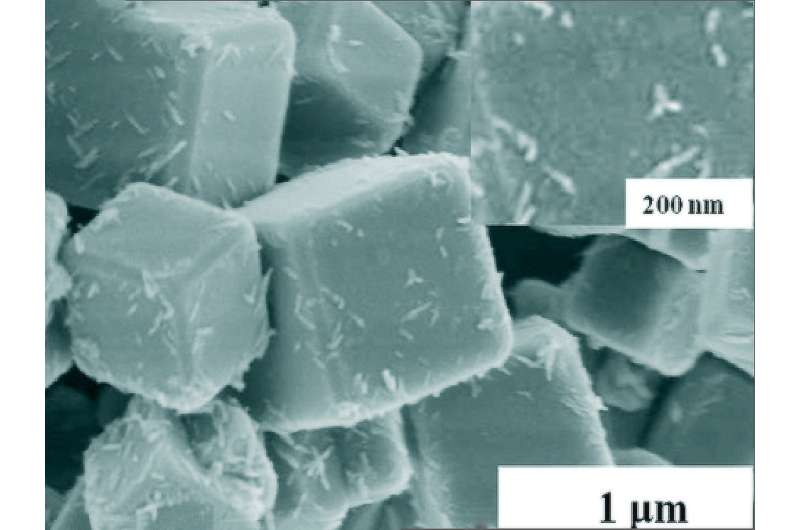Scientists found excitons in nickel oxide for the first time

Russian scientists from Ural Federal University (UrFU), together with their colleagues from Institute of Metal Physics of the Ural Department of Russian Academy of Sciences, have studied fundamental characteristics of nickel oxide nanocrystals and found excitons on the light absorption edge for the first time. An exciton is an electron-hole pair bound with electrostatic coupling that migrates in a crystal and transmits energy within it. The presence of an exciton in this area allows for detailed research of edge parameters in permitted energy bands. This may be useful for the development of next-generation optoelectronic devices. The results of the study were published in Physica B: Physics of Condensed Matter journal.
Liquids and (under certain circumstances) gases are divided into conductors and dielectrics. The former conduct electricity, and the latter, respectively, do not. Semiconductors fall between these two categories—conductivity occurs due to the movement of charged electrons and holes within the crystal. They are found in systems with impurities that can either release or receive electrons, as well as after irradiation with high-energy light.
"In the physics of semiconductors, there is a notion of fundamental adsorption edge that indicated the edge-level energy of light adsorption. It corresponds to the energy gap—the area of energies an electron has to pass in the course of movement under the influence of light from the valence band (where it is usually located) to the conductivity band. A positively charged empty space that occurs at this place is called a hole. Its electrostatic (Coulombic) interaction with the electron in the conduction band causes the formation of an electron-hole pair, or and exciton. In the optic spectrum it can be seen as a narrow line a little below the fundamental adsorption edge. Notably, an exciton does not participate in electrical conductivity, but transfers the absorbed energy," says Anatoly Zatsepin, a co-author of the article, and the head of a scientific lab at UrFU.
Exciton bond energy is too low, so the temperature should be low in order to register them. After being irradiated with short wavelength light, an electron-hole pair collapses as the excitation is too high. Excessive energy is also released in the form of radiation, and its spectrum may be registered. This is how excitons were found in nano-sized crystals of nickel oxide. A system like this is highly correlated, i.e. the interaction between its parts is very strong. The research team studied the fundamental adsorption edge at low temperatures and found lines in which the intensity decreased when the temperature was growing.
These facts, as well as the energy values, indicate their exciton nature. Scientists also studied fundamental characteristics of magnesium oxide nanocrystals with small admixtures of nickel. In this case, excitons formed upon the transition of the electron (and therefore the negative charge) from the valence band of the main component to the admixture area. The hole was bound with an electrostatic field generated by the electron. The detection of excitons is a sensitive tool for studying the complicated structure of the border area between the valence band and the conductivity band in semiconductors.
"We first found excitons with charge transfer at the boundary of fundamental adsorption in nickel oxide and at the impurity adsorption edge in magnesium oxide. These results may be of interest to specialists in theoretical physics who study the band structure of oxides with strong correlations. NiO has been considered as prototype of such oxides for a long time, and many calculation schemes have been tested using this object. The results may also be relevant for the development of new optoelectronic devices," says Anatoly Zatsepin.
Provided by Ural Federal University




















